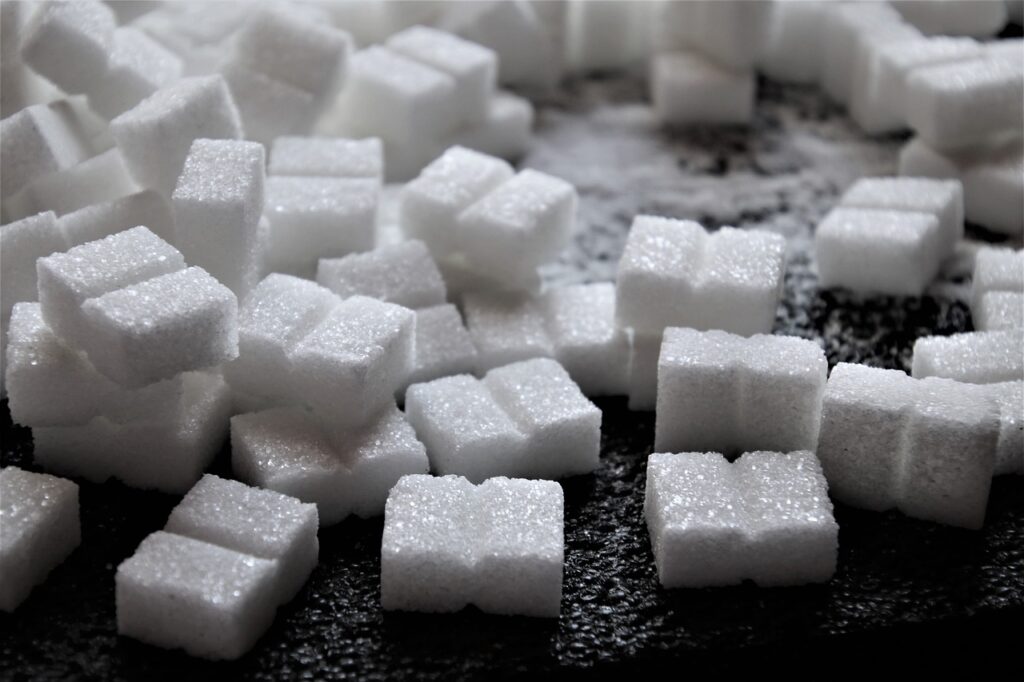Sugar is everywhere—in soft drinks, packaged snacks, breakfast cereals, and even so-called “healthy” foods like yogurt and granola bars. While a little sugar is okay, excessive consumption can lead to serious heart health problems, including high blood pressure, obesity, and an increased risk of heart disease.
But why is sugar so harmful to the heart? And how can you cut back without feeling deprived?
In this article, we’ll explore how sugar contributes to heart disease, its hidden sources, and practical ways to reduce your intake for better heart health
How Sugar Affects Heart Health
Too much sugar in your diet can:
1. Increase Bad Cholesterol (LDL) and Triglycerides
When you consume excess sugar, your liver converts it into triglycerides, a type of fat that circulates in the blood. High triglyceride levels contribute to artery blockage and heart disease.
2. Raise Blood Pressure
A diet high in sugar has been linked to high blood pressure (hypertension), which puts extra strain on the heart and increases the risk of heart attacks and strokes.
3. Cause Weight Gain and Obesity
Sugary foods are often high in empty calories, leading to weight gain. Obesity is a major risk factor for heart disease, type 2 diabetes, and metabolic syndrome.
4. Increase Insulin Resistance
High sugar intake can lead to insulin resistance, a condition that increases the risk of diabetes and heart disease. Over time, it can damage arteries and contribute to plaque buildup.
5. Trigger Inflammation
Excess sugar promotes chronic inflammation, which damages blood vessels and raises the risk of atherosclerosis (hardening of the arteries)
Hidden Sources of Sugar in Your Diet
Many people associate sugar with desserts and soft drinks, but it’s hidden in many everyday foods, including:
🚨 Breakfast Cereals & Granola Bars – Often loaded with added sugars.
🚨 Flavored Yogurt – Some brands contain as much sugar as ice cream!
🚨 Salad Dressings & Sauces – Ketchup, BBQ sauce, and store-bought dressings can be sugar traps.
🚨 Fruit Juices & Smoothies – Even 100% fruit juice contains natural sugars that spike blood sugar levels.
🚨 White Bread & Pasta – Processed carbs act like sugar in the body and raise insulin levels.
🚨 Protein Bars – Marketed as “healthy” but often packed with sugar.
✅ Pro Tip: Always check the nutrition label for hidden sugars, which may appear as:
High fructose corn syrup
Cane sugar
Dextrose
Maltose
Agave nectar
How Much Sugar Is Too Much?
According to the American Heart Association (AHA), the recommended daily limit for added sugar is:
✔️ Men: No more than 36 grams (9 teaspoons) per day
✔️ Women: No more than 25 grams (6 teaspoons) per day
However, the average person consumes three times this amount, increasing their risk of heart disease.

Simple Ways to Cut Back on Sugar
1. Choose Whole Foods Over Processed Foods
Whole foods like fruits, vegetables, nuts, and lean proteins contain natural sugars, but they also provide fiber, vitamins, and minerals that balance blood sugar levels.
2. Read Nutrition Labels Carefully
Look for hidden sugars in packaged foods and opt for low-sugar or sugar-free alternatives.
3. Cut Down on Sugary Beverages
✅ Swap soda, energy drinks, and sweetened teas for:
Water with lemon or mint
Unsweetened herbal tea
Sparkling water
4. Opt for Natural Sweeteners in Moderation
Instead of refined sugar, try:
🍯 Raw honey (in small amounts)
🍁 Pure maple syrup
🍌 Mashed bananas as a sweetener in baking
5. Reduce Sugar in Coffee & Tea
Start by gradually reducing the amount of sugar you add to your drinks. Over time, your taste buds will adjust.
6. Swap Sugary Snacks for Healthier Options
Replace candy, cookies, and pastries with:
🥜 Nuts & seeds (great for heart health!)
🍓 Fresh fruit (opt for lower-sugar options like berries)
🍫 Dark chocolate (70% cacao or higher)
7. Cook at Home More Often
Restaurant and takeout meals often contain hidden sugars in sauces and seasonings. Cooking at home gives you control over ingredients.
8. Avoid Artificial Sweeteners
While artificial sweeteners may seem like a good alternative, studies suggest they can still trigger sugar cravings and contribute to metabolic issues.
9. Get Enough Sleep
Lack of sleep increases cravings for sugary, high-calorie foods. Aim for 7-9 hours of quality sleep each night.
10. Make Small, Sustainable Changes
Cutting out sugar overnight can be difficult, so start small:
✅ Reduce sugar in coffee by half
✅ Swap soda for sparkling water
✅ Choose plain yogurt instead of flavored options
Over time, these small changes will add up to big improvements in heart health!
Final Thoughts
Excess sugar is one of the biggest threats to heart health, leading to obesity, high cholesterol, diabetes, and inflammation. By identifying hidden sugars, making smarter food choices, and reducing intake gradually, you can lower your risk of heart disease and improve overall well-being.
📌 Take Action Today:
✔️ Start by cutting out one sugary food or drink from your diet.
✔️ Replace processed snacks with whole, nutrient-rich foods.
✔️ Read nutrition labels and opt for lower-sugar options.
Your heart will thank you for making these changes! ❤️
Remember, you don’t need to overhaul your diet overnight. Start with small, manageable changes—like swapping white bread for whole grain or adding an extra serving of veggies to your dinner plate.
Complement your heart-healthy diet with supplements like CardioForLife Powder to fill in any nutritional gaps and support overall cardiovascular health.
